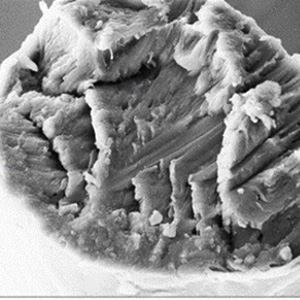Reuse of livestock waste for the reinforcement of rammed-earth materials: investigation on mechanical performances

Published: 2 February 2023
Abstract Views: 1205
PDF: 267
HTML: 8
HTML: 8
Publisher's note
All claims expressed in this article are solely those of the authors and do not necessarily represent those of their affiliated organizations, or those of the publisher, the editors and the reviewers. Any product that may be evaluated in this article or claim that may be made by its manufacturer is not guaranteed or endorsed by the publisher.
All claims expressed in this article are solely those of the authors and do not necessarily represent those of their affiliated organizations, or those of the publisher, the editors and the reviewers. Any product that may be evaluated in this article or claim that may be made by its manufacturer is not guaranteed or endorsed by the publisher.
Similar Articles
- Andrea Casson, Valentina Giovenzana, Alessio Tugnolo, Alessia Pampuri, Ilaria Fiorindo, Roberto Beghi, Riccardo Guidetti, Assessment of an expanded-polypropylene isothermal box to improve logistic sustainability of catering services , Journal of Agricultural Engineering: Vol. 52 No. 2 (2021)
- Alessandro Parenti, Paolo Spugnoli, Piernicola Masella, Lorenzo Guerrini, Stefano Benedettelli, Stefano Di Blasi, Comparison of grape harvesting and sorting methods on factors affecting the must quality , Journal of Agricultural Engineering: Vol. 46 No. 1 (2015)
- Daniele Duca, Giovanni Riva, Ester Foppa Pedretti, Giuseppe Toscano, Chiara Mengarelli, Giorgio Rossini, Solid biofuels production from agricultural residues and processing by-products by means of torrefaction treatment: the case of sunflower chain , Journal of Agricultural Engineering: Vol. 45 No. 3 (2014)
- Daniele Duca, Giuseppe Toscano, Ester Foppa Pedretti, Giovanni Riva, Sustainability of sunflower cultivation for biodiesel production in central Italy according to the Renewable Energy Directive methodology , Journal of Agricultural Engineering: Vol. 44 No. 4 (2013)
- Fabrizio Mazzetto, Pasqualina Sacco, Aldo Calcante, Algorithms for the interpretation of continuous measurement of the slurry level in storage tanks , Journal of Agricultural Engineering: Vol. 43 No. 1 (2012)
- Salvatore Benfratello, Costanza Di Stefano, Vito Ferro, Luigi Palizzolo, Testing mechanical characteristics of chestnut stakes used in bed sills for stream restoration , Journal of Agricultural Engineering: Vol. 48 No. 3 (2017)
- Daniela Lovarelli, Elisabetta Riva, Gabriele Mattachini, Marcella Guarino, Giorgio Provolo, Assessing the effect of barns structures and environmental conditions in dairy cattle farms monitored in Northern Italy , Journal of Agricultural Engineering: Vol. 52 No. 4 (2021)
- Ester Foppa Pedretti, Daniele Duca, Giuseppe Toscano, Giovanni Riva, Andrea Pizzi, Giorgio Rossini, Matteo Saltari, Chiara Mengarelli, Massimo Gardiman, Riccardo Flamini, Sustainability of grape-ethanol energy chain , Journal of Agricultural Engineering: Vol. 45 No. 3 (2014)
- Lucia Recchia, Daniele Sarri, Marco Rimediotti, Paolo Boncinelli, Enrico Cini, Marco Vieri, Towards the environmental sustainability assessment for the viticulture , Journal of Agricultural Engineering: Vol. 49 No. 1 (2018)
- Hui Yang, Yuhao Li, Chengguo Fu, Rongxian Zhang, Haibo Li, Yipeng Feng, Yaqi Zhang, Hongbin Cong, Fuquan Nie, Research on inspection route of hanging environmental robot based on computational fluid dynamics , Journal of Agricultural Engineering: Vol. 55 No. 2 (2024)
<< < 1 2 3 4 5 6 7 8 9 10 > >>
You may also start an advanced similarity search for this article.

 https://doi.org/10.4081/jae.2023.1434
https://doi.org/10.4081/jae.2023.1434







